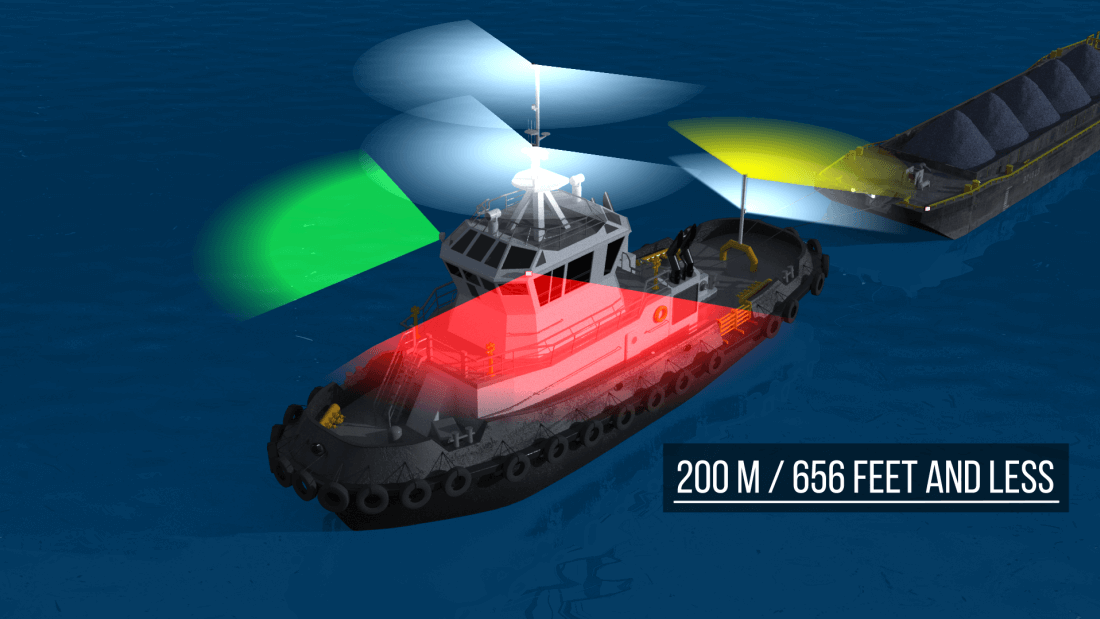Navigation Lights in the United States
Navigation lights are essential safety features on boats, helping vessels see and be seen during nighttime or low-visibility conditions. They indicate a boat’s position, direction of travel, and type, allowing other boaters to determine who has the right of way and how to avoid collisions.
Specific lighting configurations are required for boats operating between sunset and sunrise or in times of restricted visibility. It's your responsibility to make sure your boat shows the proper lights depending on its size and the waters on which you are operating.
Every vessel is required by law to display specific navigation lights that vary in color (white, red, green, yellow, or blue), arc of illumination, range of visibility, and placement. These lights help other boaters identify your vessel’s type and movement, even in darkness or poor weather.
Today, we will focus on pleasure craft under 65 feet (20 meters).
1. Sidelights (Port and Starboard Lights)
-
Port (left) light: Red
-
Starboard (right) light: Green
These lights indicate a vessel’s direction of travel and help others determine which side of your boat they are seeing. They are visible from the front and sides but not from behind. When you see another boat’s red light, you are looking at its port side, meaning it has the right of way.
2. Stern Light
A white light located at the rear (stern) of the vessel. It shines in a 135° arc and is visible only from behind. This light lets other boaters know they are approaching another vessel from the rear.
3. Masthead Light (Forward White Light)
A white light placed near the top center or mast of a power-driven vessel, visible across a 225° arc in the forward direction. It indicates that the vessel is under engine power. All motorboats must display this light when operating at night or in restricted visibility.
4. All-Round White Light
A 360° white light visible from every direction around the vessel. Small boats under 39 feet (12 meters) often use this single light instead of separate masthead and stern lights. When anchored, this light should also be shown continuously.
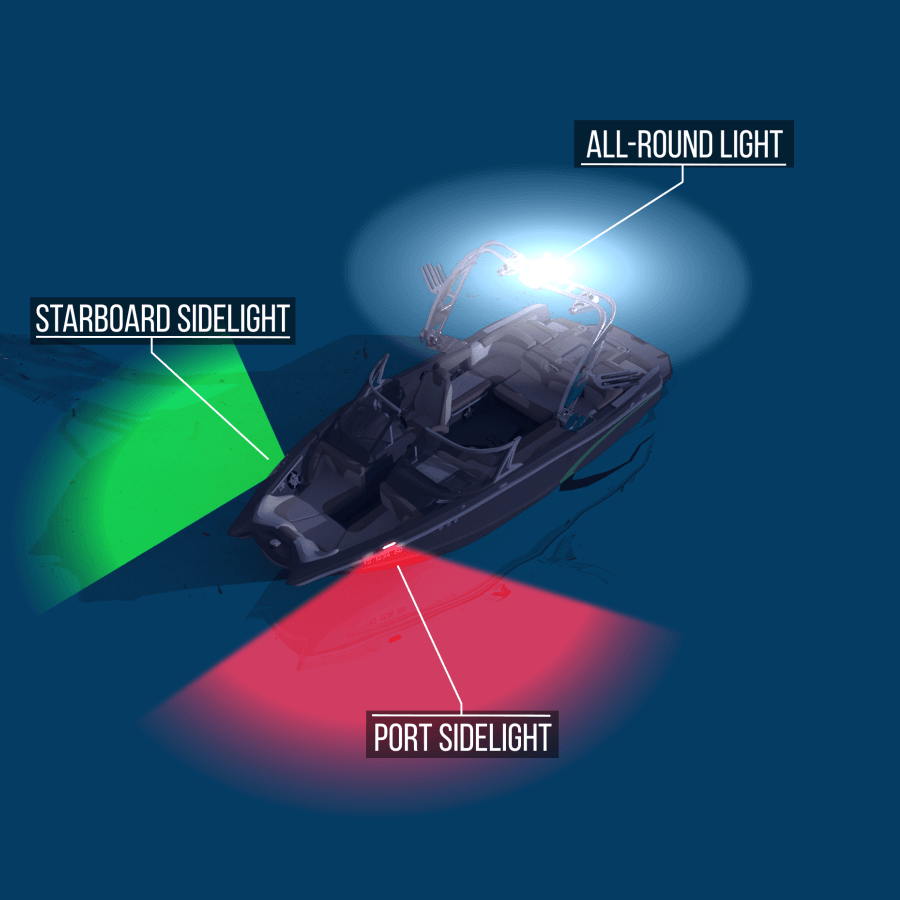
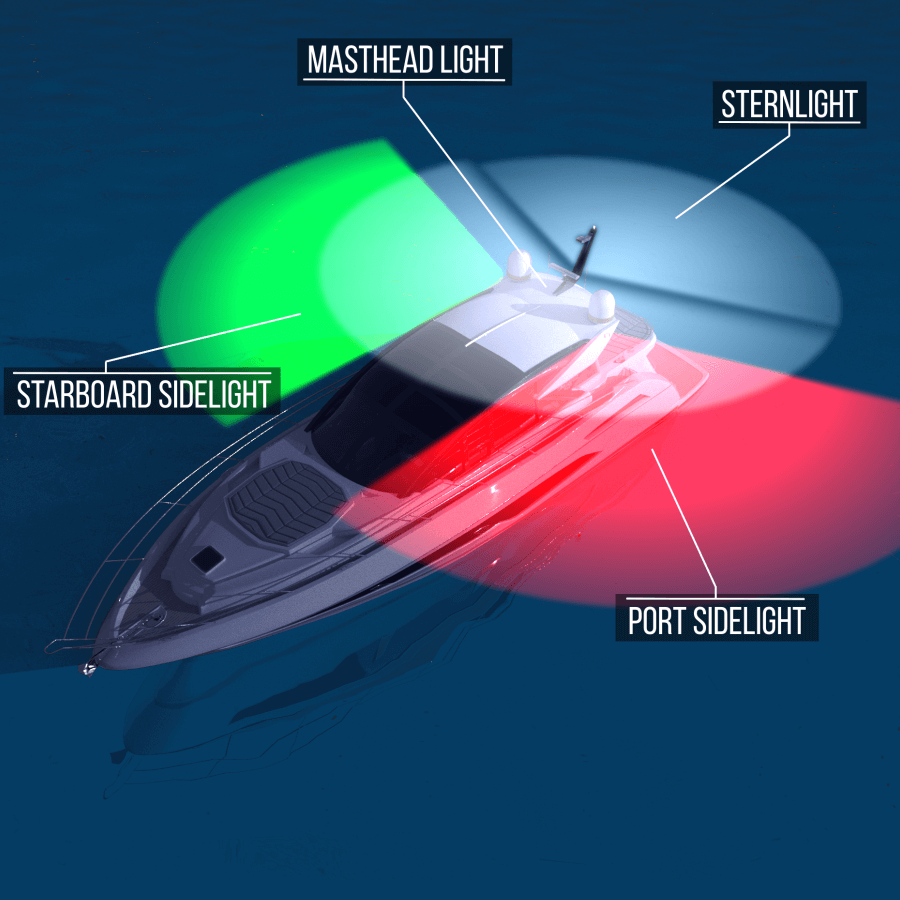
Power-driven vessels of less than 20 meters (65.62 feet) navigation lights at night:
1. Masthead (Forward White) Light
2. Stern Light
3. Sidelights (Port and Starboard)

Power-driven vessels of less than 7 meters (23 feet) navigation lights:
1. All-Round White Light
2. Sidelights (Port and Starboard)

whose maximum speed cannot exceed 7 knots may exhibit an all-around white light (360 degrees) and, if practicable, sidelights instead of the lights prescribed above, in international waters only.
Sailing Vessels of less than 20 meters (65.62 feet) navigation lights at night
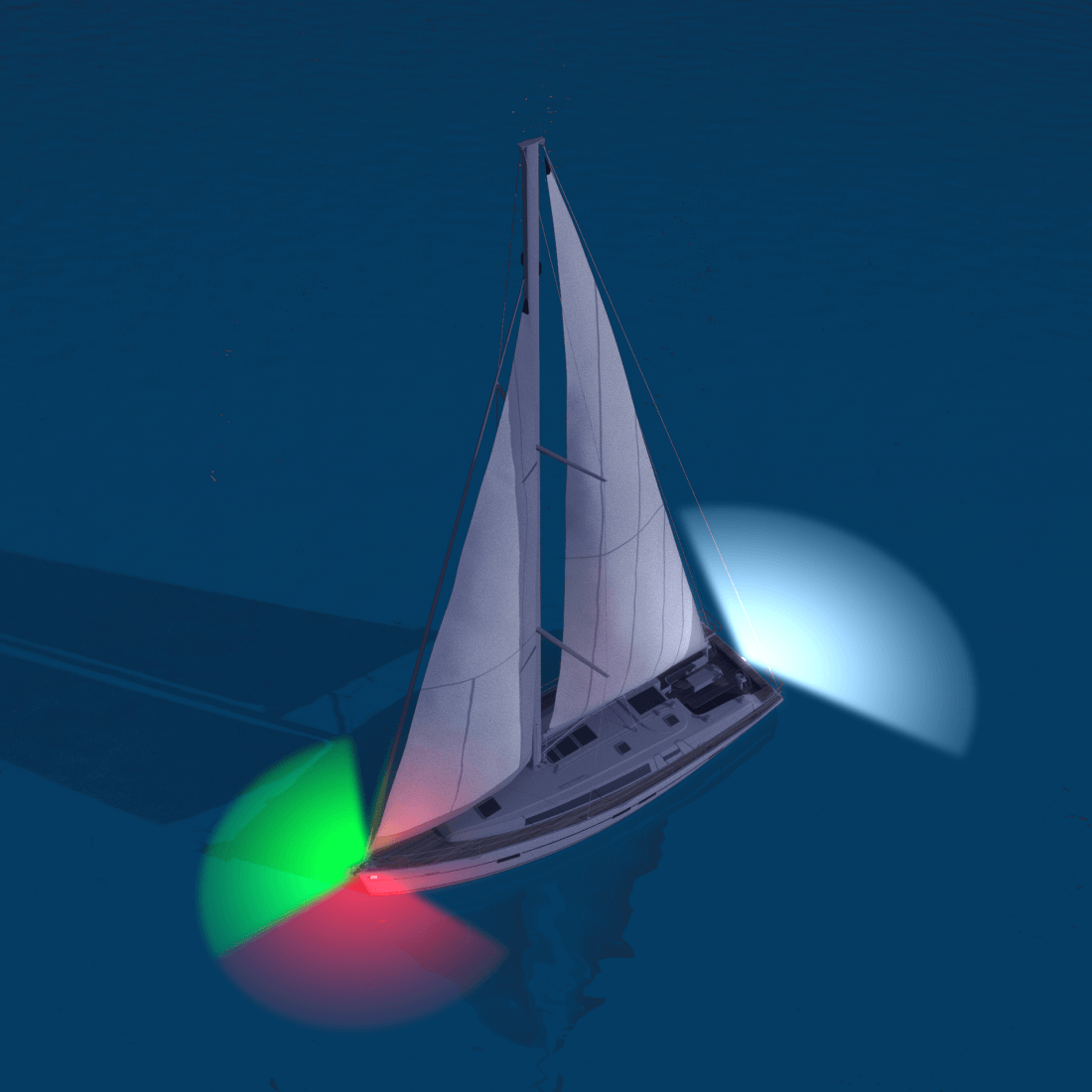
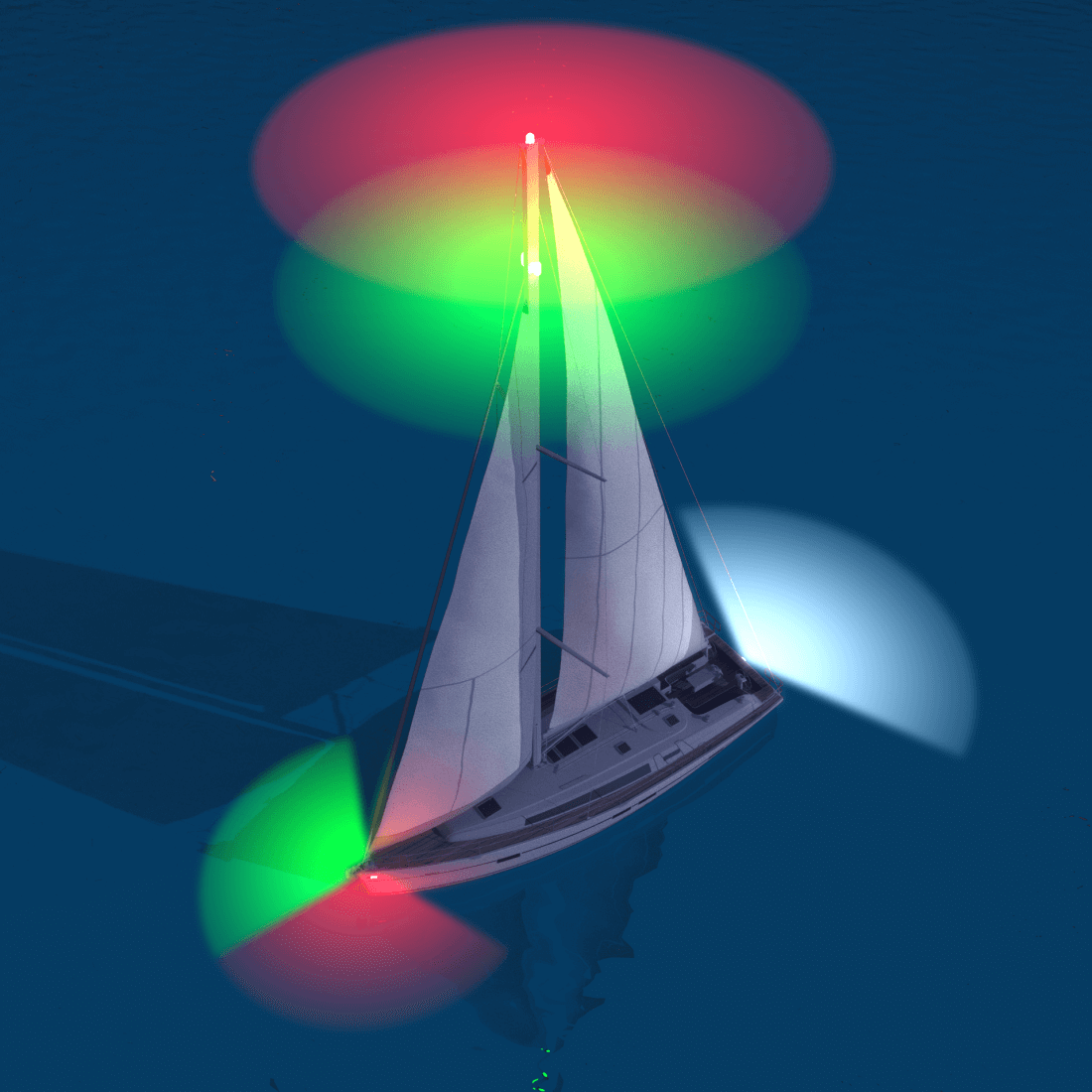
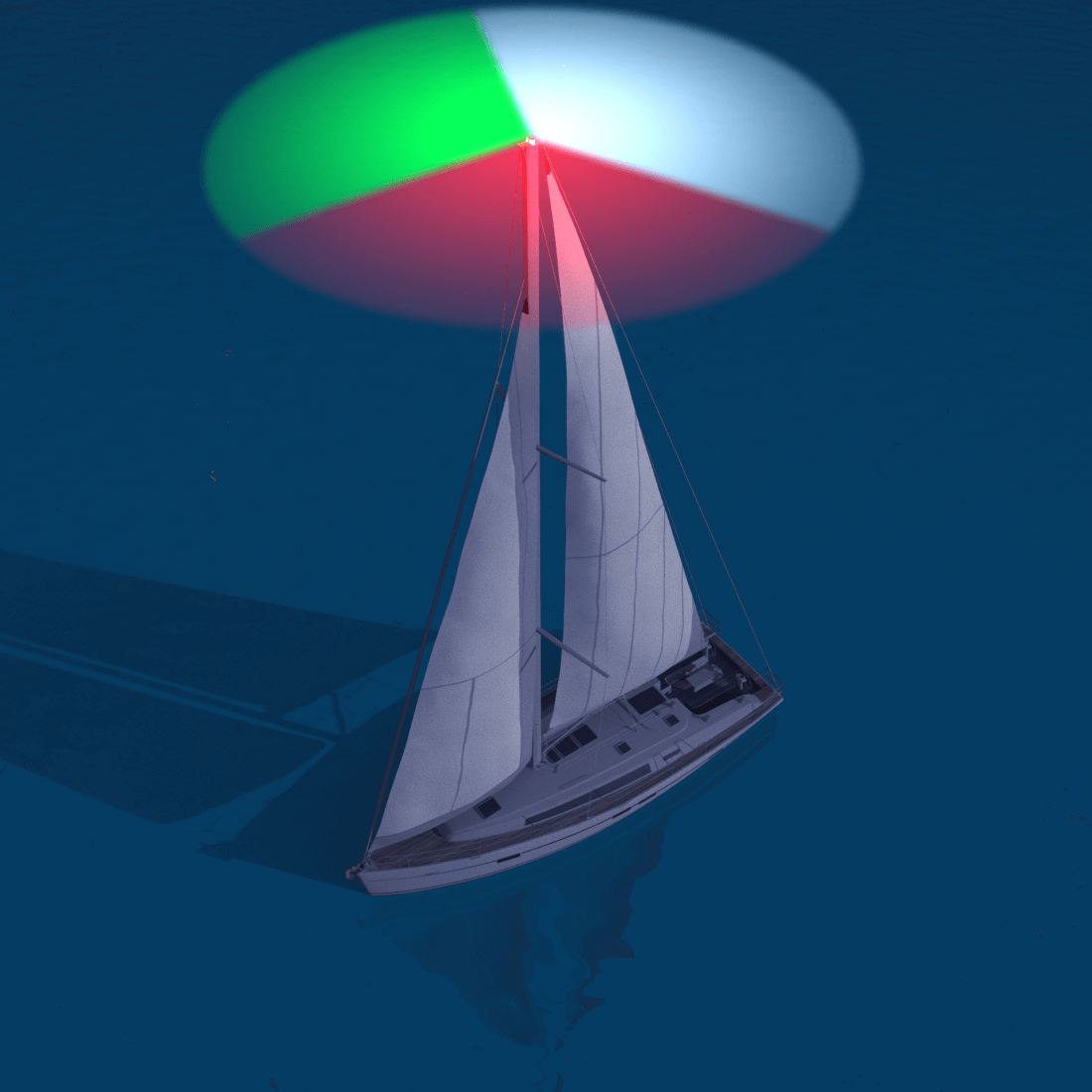
Sailing vessels less than 7 meters may carry an electric torch or lighted lantern showing a white light to be displayed in sufficient time to prevent collision. If practicable, the lights prescribed for sailing vessels less than 20 meters should be displayed.
Kayaks & canoes navigation lights
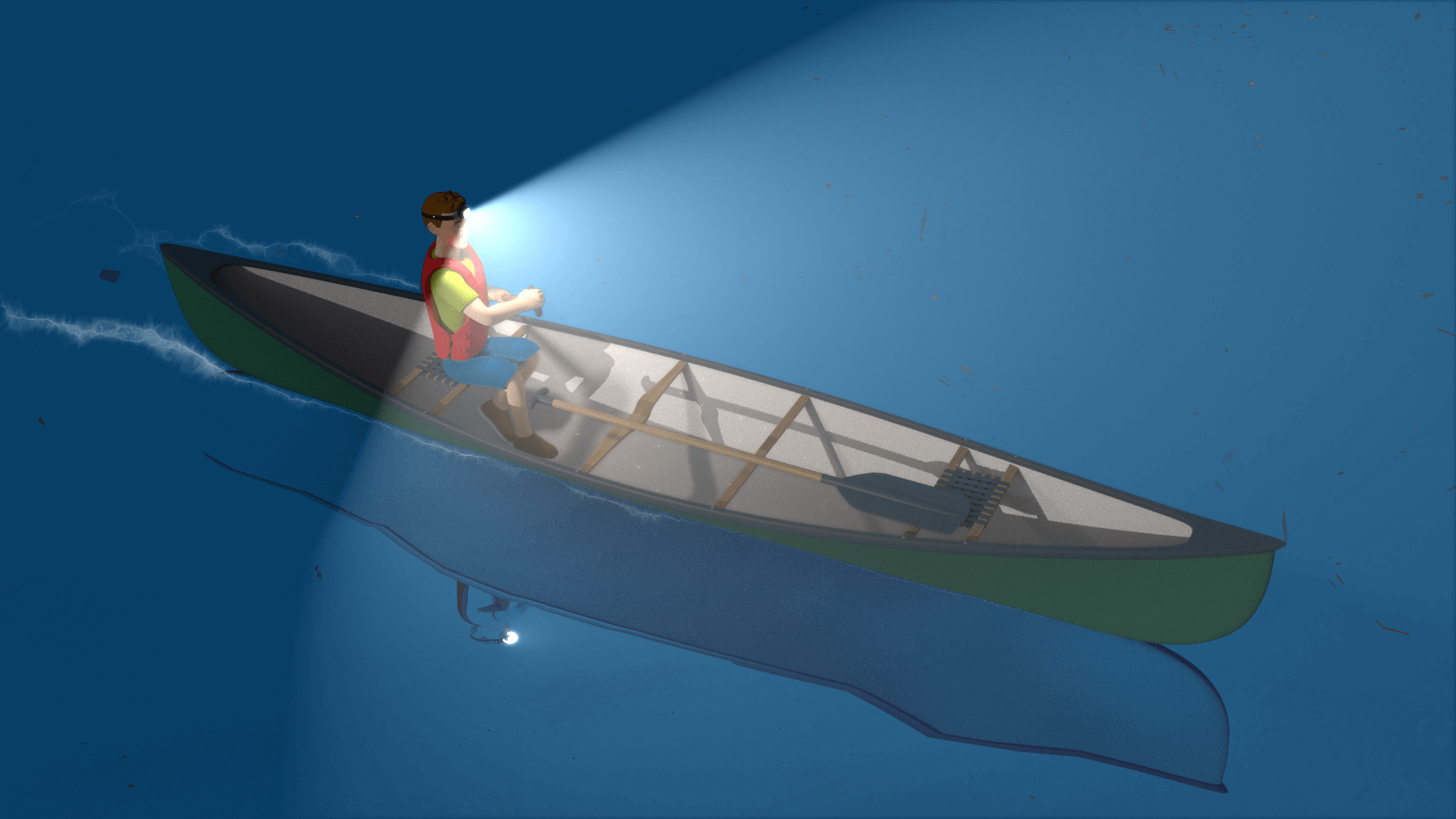
A canoe or kayak may display the lights prescribed for sailing vessels, but if not, must have ready at hand an electric torch or lighted lantern (flashlight) showing a white light to be displayed in sufficient time to prevent collision.
Anchored vessels navigation lights
Power-driven vessels and sailing vessels at anchor must display anchor lights. An anchor light for a vessel less than 50 meters in length is an all-around white light visible for 2 miles and exhibited where it can best be seen.
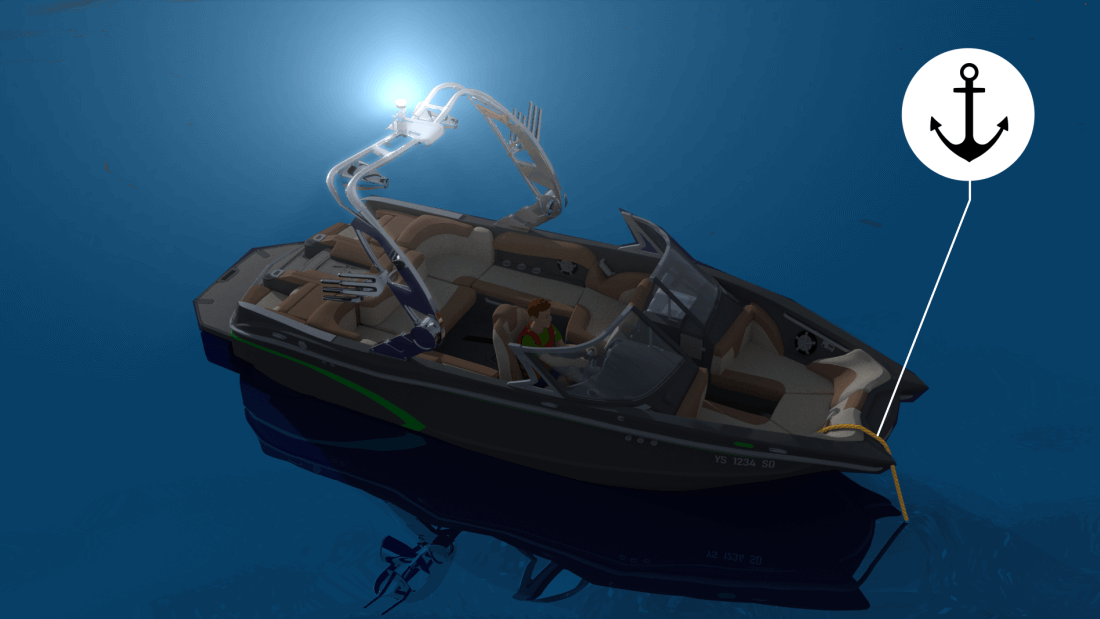
Vessels less than 7 meters are not required to display anchor lights or day shapes unless anchored in or near a narrow channel, fairway or anchorage, or where other vessels normally navigate. Anchor lights are not required on vessels less than 20 meters, anchored in special anchorages in inland waters designated by the Secretary of Transportation.
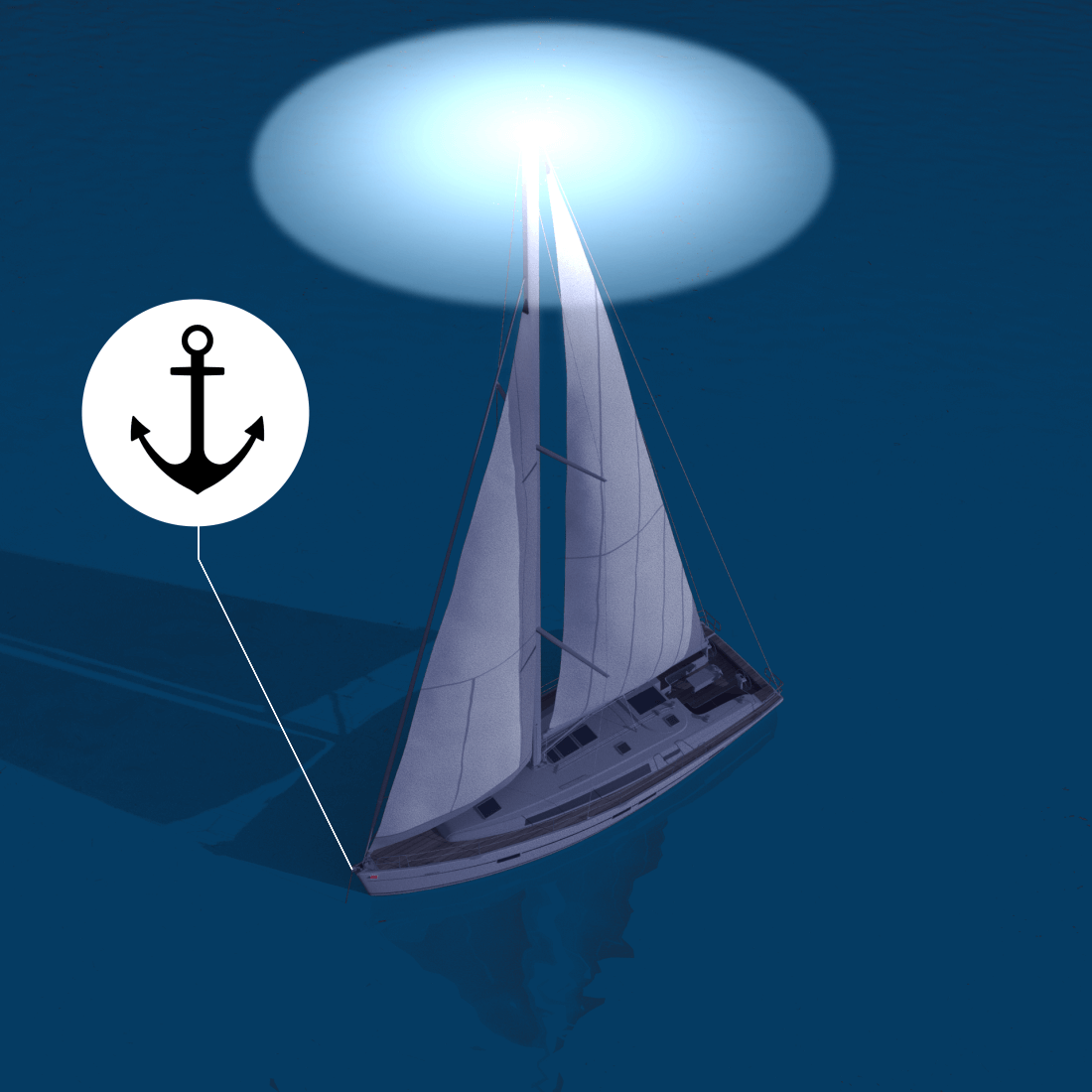
Law enforcement vessel
A flashing blue light indicates a law enforcement vessel. Do not impede its operation
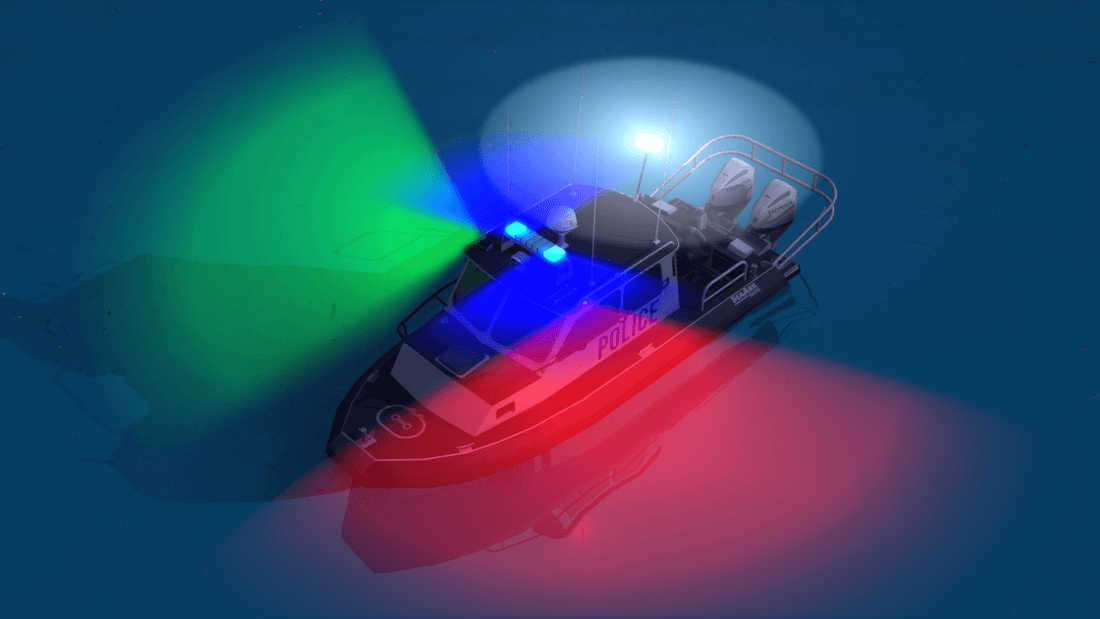
Towing vessel navigation lights
If you see yellow lights or a flashing yellow light, stay away, it is a towing vessel with an object in tow.
